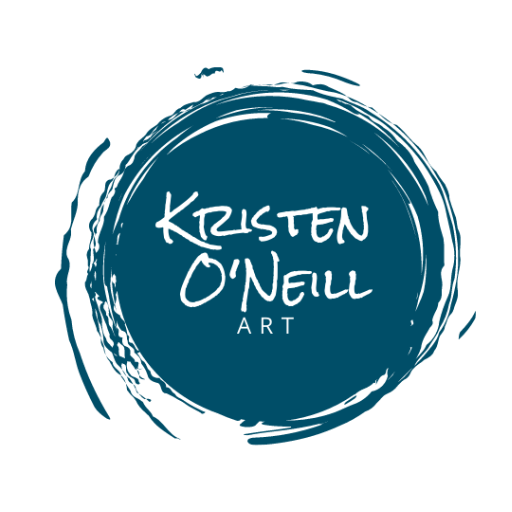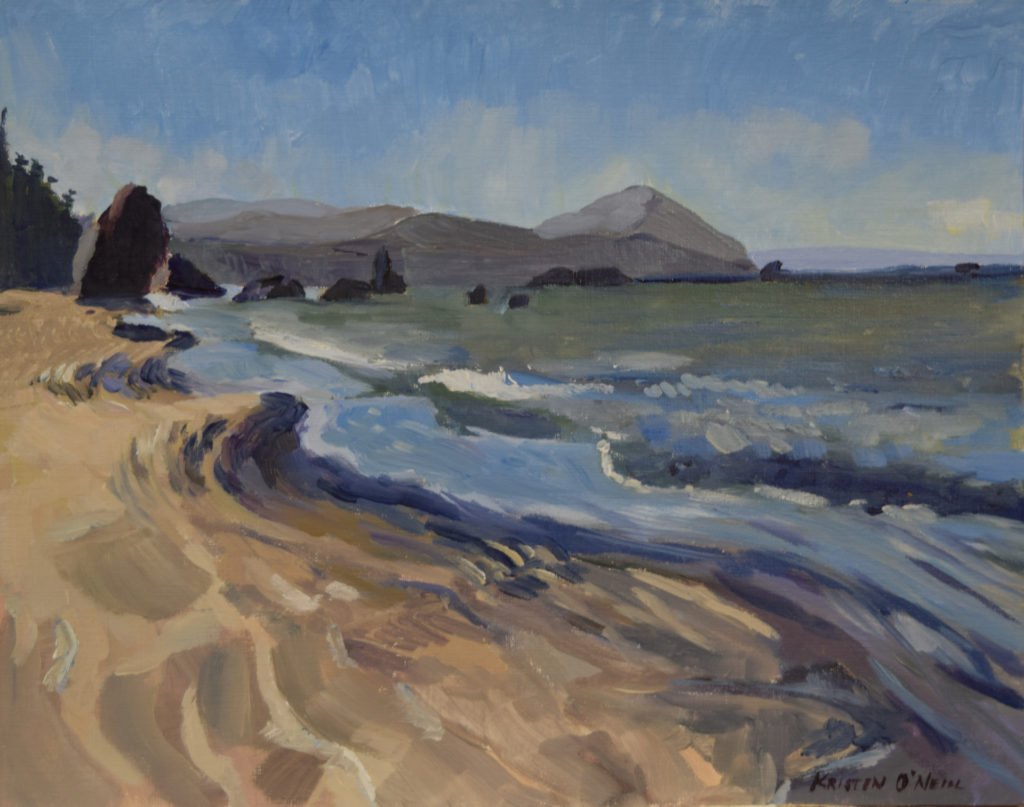Color of Sand
While sand comes in a variety of colors from the black sand beach of Hawaii to the white sands of the Caribbean, most of the beaches I have spent time on are a, well, “sandy” color of beige. I have found that the best way to arrive at a paint color for how to paint sand is to mix a neutral beige color using the colors I am already using in the painting. This way there is color harmony in the painting.
How to Mix a “Beige”
First, what the hell is “beige” anyway? Aside from every apartment hallway, this is a brown color with a ton of white in it and usually a bit to the yellow-side of brown. Remember: to make brown, we add all three primaries together. So, to make beige, we make a brown that is mixed with more yellow. Yellow is not a strong color in color mixing, so add the blue and red very slowly to the yellow. Then add white.
Wet Sand
To create the effect of wet sand, try a few different options:
- Add less white to your sandy color
-
Slowly add a tiny (tiny!!) bit of purple to mixture. (Remember: purple is red and blue, so to make brown you are adding purple and yellow together).
-
Try a bit more blue
- Saturated sand will act more like a mirror, like a puddle does – and needs to reflect the sky colors.
In general, wet sand is a darker version of the color you are using for the dry sand. Do not add black! Adding black dulls your color. It’s like murdering your color. Let your colors dance and feel lively by avoiding black whenever you truly do not need to use it.
Brushstrokes
There are a bazillion grains of a sand on a beach. Luckily you aren’t painting grains of sand. You are painting the effect of a sandy beach. This allows you to loosen up your brushstrokes. Think about the how the waves lap up onto the sand.
- Are there different lines of values and colors in the sand?
- Are there big sandy dunes?
- Are there big wind-sculpted parts of the beach?
Think about direction of your brush strokes. Together they add up to an overall affect. Are they believable?

Notice the variety of the brushstrokes in the sand in the painting above. The long sweeping light yellow strokes, the short choppy strokes near the water. These help guide your eye around the painting and add interest.
Sand as the Focus of the Painting
Sand can be the star of the painting. Here, in “Heceta Head Lighthouse” painting, the lighthouse is secondary. The water running through the sand on the way to the ocean is in the foreground, with lots of places to play with color in the sand. The dark of the hill in shadow, and shadowy reflections, are achieved with mixing phtahlo green and alizarin crimson. The sand of the beach is based in cadmium yellow medium and dioxazine purple, adding more alizarin crimson and yellow to get the more orange bits.
Hope this post on sand helps you feel inspired to not just make the ocean the star of your creativity. Happy painting!

